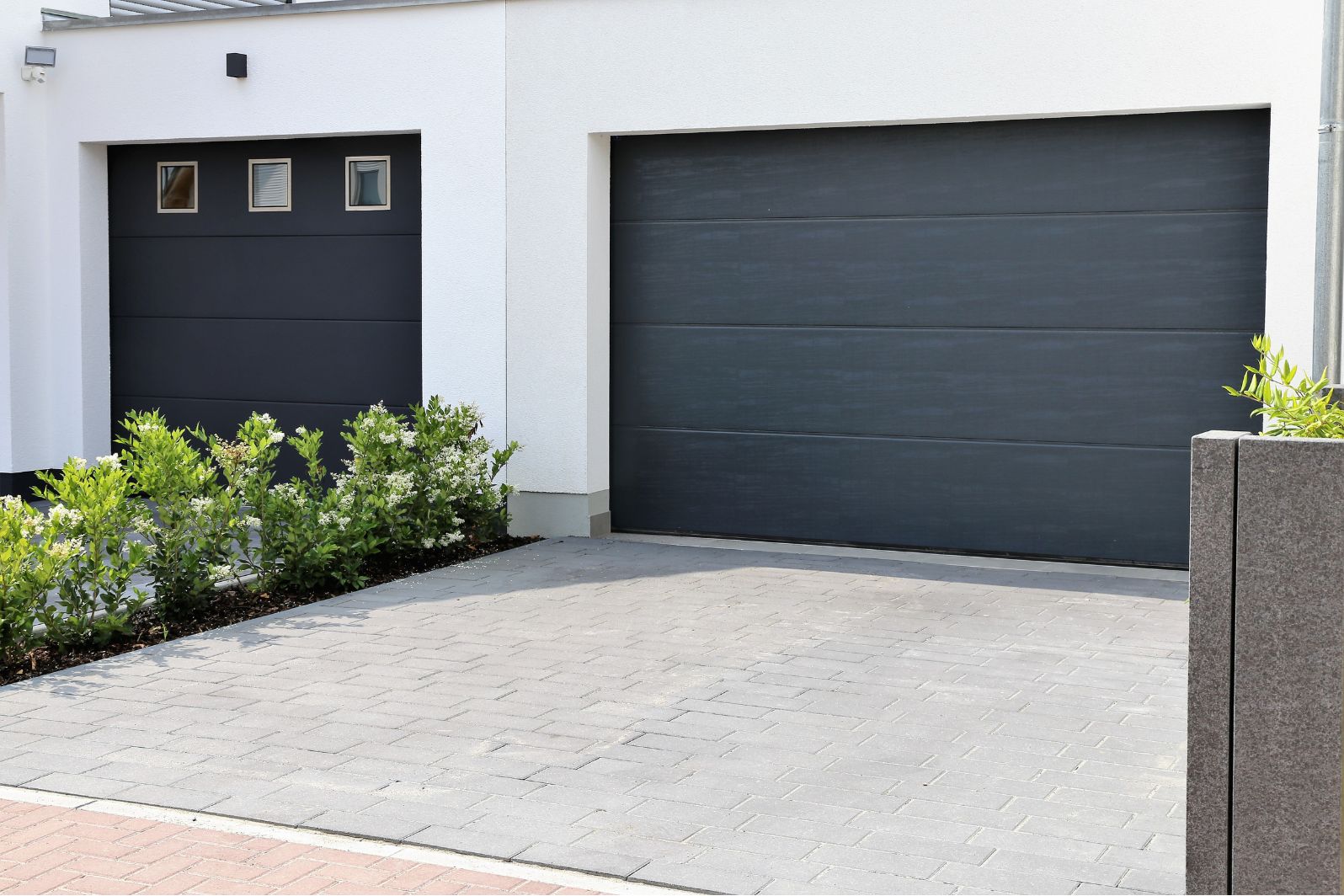How do you choose the best garage flooring?
With so many options available, it can be hard to know what’s right for you. Some floors offer durability, while others focus on style or easy maintenance.
Understanding the pros and cons of each choice will help you make an informed decision. Read on as we talk more about choosing the best options and the pros and cons involved.
Table of Contents
Epoxy Coating
Epoxy coating is a type of floor covering commonly used in garages. It consists of a mixture of resin and hardeners that create a strong surface when applied. The process involves cleaning the concrete floor and then applying the epoxy in layers.
Once it cures, it forms a durable and glossy finish. Epoxy comes in various colors and patterns, allowing you to choose a style that fits your garage. This coating is often chosen for its smooth appearance and solid feel.
Pros
Epoxy coatings are strong and can handle heavy items. They last for many years without needing replacement. The smooth surface makes cleaning easy, and they resist stains from oil and chemicals.
Epoxy comes in many colors and finishes, allowing you to choose what you like. It creates a seamless surface that stops dirt from getting stuck.
It also protects against moisture, reflects light, and can become slip-resistant. Installation is quick, so you can use your garage sooner.
Cons
Epoxy can struggle with temperature changes, making it hard to apply in extreme heat or cold. The smooth surface becomes slippery when wet, creating safety risks.
It takes time to cure completely, so you cannot use the garage right away. Proper preparation is necessary, adding to the time and effort involved.
Epoxy can also cost more than other flooring options. If you want to change the flooring later, removing epoxy can be tough and time-consuming.
Interlocking Tiles
Interlocking tiles are modular flooring pieces that fit together using a snap-and-lock system. These tiles come in various materials such as rubber, vinyl, and PVC. They fit over existing garage floors without the need for glue or other adhesives.
Interlocking floor tiles are typically square-shaped and available in different colors and patterns. They provide a solid surface that covers the entire garage floor. Since they’re modular, you can adjust the layout or replace tiles as needed.
Pros
Interlocking tiles are easy to install, allowing you to do it yourself. They come in many colors and patterns, so you can create a unique look. These tiles provide a cushioned surface, making them comfortable to stand on.
You can easily remove and replace individual tiles if they get damaged. They resist moisture, helping to keep your garage floor dry. Interlocking tiles also need minimal maintenance, making them a practical choice for your garage.
Cons
Interlocking tiles can shift or separate over time, especially under heavy loads. Some types of tiles may fade when exposed to direct sunlight. They may not provide as much durability as epoxy or concrete options.
If water gets underneath the tiles, it can cause mold or mildew to form. Interlocking tiles can feel less solid than other flooring choices. Some people find that dirt and debris can get trapped in the seams between the tiles.
Concrete Sealer
Concrete sealer is a protective coating applied to concrete floors. It helps to enhance the surface while providing a barrier against moisture and stains. The application involves cleaning the concrete and then rolling or spraying the sealer onto the surface.
Sealers come in various finishes, from glossy to matte. Some sealers also provide a colored tint to add more style. This option is popular for those who want to maintain the original concrete appearance while protecting it.
Pros
Concrete sealer provides strong protection against moisture, stains, and spills. It helps keep your garage floor looking clean and fresh. The sealer enhances the appearance of the concrete, making it more attractive. Y
ou can choose from different finishes, such as glossy or matte, to fit your style. Applying sealer is usually quick and easy, so you can enjoy your garage sooner.
This option is cost-effective compared to other flooring solutions. This makes it popular among homeowners. If you’re interested and want to know more, you can contact experts like RaceDeck Garage Floors to get started.
Cons
Concrete sealer can wear off over time, so you need to reapply it every few years. Some sealers become slippery when wet, creating safety risks. The application process takes time, especially if you have to clean the concrete first.
If the concrete has cracks, the sealer cannot fill them, which may lead to more damage. Certain sealers can also struggle with heavy traffic or extreme conditions. This, in turn, makes them less effective.
Rubber Mats
Rubber mats are flooring pieces made from durable rubber material. You can find them in different sizes and thicknesses to suit your garage. These mats lie flat on the garage floor and can cover a specific area or the entire floor.
Many mats feature interlocking edges or straight-cut sides to keep them in place. They do not need adhesive for installation, allowing you to set them up quickly.
Pros
Rubber garage flooring provides a comfortable surface to stand on while working. They come in many colors and styles, so you can choose what you like. These mats offer good traction, which helps prevent slips.
Rubber mats also resist moisture, which helps protect the garage floor. They are simple to install and can be moved or replaced as needed.
Cons
Rubber mats can shift if you do not secure them well. Some mats may fade when exposed to direct sunlight. While they offer good grip, they can still become slippery when wet.
Depending on the thickness, some mats might not handle heavy loads well. Also, the seams between mats can trap dirt and debris, making it harder to keep the garage clean.
Consider These When Looking for the Best Garage Flooring Options
Choosing the best garage flooring can make a big difference in how you use your space. Each option has its strengths and weaknesses.
So think about what matters most to you when making your decision. With the right choice, you can create a garage that meets your needs and looks great.
Did you find this article helpful? Then check out our blog for more advice, tips, and insights!


